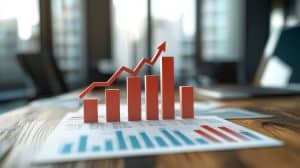
Christopher Kuehl
Managing Director • Armada
With all apologies to Afred E. Neuman (and I know this dates me!), is there a recession under way at the moment? Is there going to be one in 2023? If so, how deep and how long? These are the questions that are generally top of mind for credit managers. It would be helpful if there was a definitive answer to offer but there isn’t. Looking at the current data there is little suggesting we are currently in recession – unemployment rates are still low, Q3 growth was close to 3.0% and Q4 estimates are higher yet (according to the Atlanta Fed’s GDP Now). Capital spending remains high but has started to slow. The fact is the US rarely has a full-on recession as there are always sectors that perform well even as others suffer. It is clear that 2022 was slower than 2021 but it had to be as growth in 2021 was unusually fast (over 6.0%). The sectors that have been struggling over the last couple of years include retail, hospitality and entertainment but there has been substantial and steady growth in sectors such as automotive and aerospace as well as those sectors connected to high tech and robotics. Even sectors such as housing offer mixed results with big drops in demand for single family while multi-family demand continues to hit levels not seen since the 1980s.
There is really very little consensus among economists as there is reason for optimism as well as pessimism depending on the sector one is engaged in. Some of the overall positive indicators include a rebound in real disposable personal income (but this is concentrated in the upper 25% of income earners). Employment numbers are still well below norm and labor shortage remains a bigger issue than job loss. The challenge here is that wage hikes are driving inflation. The dominant opinion holds that 2023 will start slow and pick up speed as the year progresses. The chances for a “soft landing” have improved and the view is favoring a shorter and shallower downturn. That said, there have been “black swan” events the last few years that have drastically altered expectations (Covid and Ukraine war). Another of these events will tilt expectations. Longer term forecasts are little more than a guess.
There has been some easing of the supply chain crisis but it is by no means back to normal and likely will never be what it once was. The reliability of the Just-In-Time system has been compromised as China struggles with lockdowns but even as these are dealt with the relationship between China and the US and Europe has deteriorated. Over 90% of supply chain managers are now actively seeking alternatives to China (other Asian states, other parts of the world and reshoring). Much of the transportation congestion has been dealt with – port volumes are close to normal, there are just four loads for very truck rather than 14. The major threat is from potential port strikes and other labor actions. If Chinese shipments resume their normal volumes that will create congestion in the US port system quickly. US ports are among the most antiquated and inefficient in the world and are very fragile.
All eyes will be on the Federal Reserve again this year. This may be the most complex year they have faced recently. In 2020 and 2021 it was obvious the economy needed help and that meant lower interest rates. In 2022 the focus shifted to inflation fighting and frequent rate hikes. Now it is a toss-up – inflation is still an issue but recession is also a worry. This baseline of “high rates for longer” would again illustrate how different this cycle is as the first Fed cut in the median hiking cycle has historically come roughly six months after the last hike. Rising rates and high inflation can have very different practical effects depending on who you are and where you live. Gas prices matter much more to people who commute long distances to work, for example. Higher interest rates are costly to people who rely on credit cards to pay their bills, while they can actually be good news for retirees living off savings. To the degree there is any consensus among analysts the expectation is that the Fed Funds rate will be around 5.0%.
Recent Posts
- The All Powerful and Influential Automotive Sector July 10, 2025
- Tariff Fatigue June 24, 2025
- Obtaining Financial Records from Hesitant Customers May 29, 2025
- What Happens Next? May 8, 2025
- Three Reasons to Ignore Recession Talk (and One Reason Not to) April 24, 2025
- Stability in Uncertain Times: Insights on Small Business Performance and Market Trends March 26, 2025











